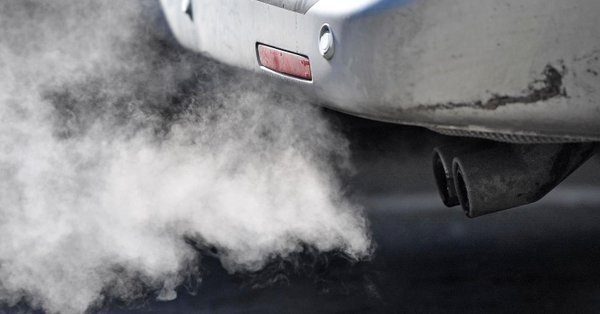Pollution from burning wood, coal indoors kill 2.8 million every year: IEA

When Joyce Njenga replaced her traditional open-fire hearth with an energy-saving stove, she was pleased it lived up to its promised efficiencies: using less firewood and halving cooking times.
But it also keeps her family warm in cold weather.
"When I finish cooking in the kitchen, I carry the cooker to the living room where my family keeps warm for the rest of the evening," the mother-of-five said.
And before bed, she puts water on the stove so a warm bath is ready by the time the sun rises over Nguriunditu village in central Kenya.
More than 100,000 homes in Kenya use the stove - known locally as jiko okoa, a Swahili phrase that means a cooker that saves energy - for food preparation, said Joseph Njoroge, the principal secretary at the Ministry of Energy and Petroleum.
But a third of users have found an additional benefit from it, he said: heating.
And with the country's meteorological department warning in June that the cold season could get chillier in the future due to the effects of climate change, that number could rise.
HEALTH IMPACT
Burning wood, coal or kerosene indoors - as about 2.8 billion people worldwide do every day, the International Energy Agency (IEA) says - can be highly dangerous. The associated pollution kills about 2.8 million people each year, according to a 2017 IEA report.
https://www.iea.org/publications/freepublications/publication/WEO_2017_Executive_Summary_English_version.pdf
The health burden, which includes strokes, heart disease, breathing disorders, and lung cancer, falls mainly on women and young children, according to the World Health Organization.
In order to tackle that, the U.N. Foundation in 2010 launched a worldwide program to tackle the problem of illness and deaths from indoors cooking.
That effort is run by the Global Alliance for Clean Cookstoves project, which aimed to provide 100 million homes with clean and efficient stoves and fuels by 2020.
By 2017, the alliance said it had distributed about 81 million stoves worldwide - including in Kenya - that was clean or efficient or both.
Njenga's stove came from a different effort, the Muguga Ecosystem Research Community Forest Association (MERCFA), a community-based organization.
Simon Kamonde, who chairs MERCFA, said demand for the stoves - which are funded by the African Development Bank in partnership with the government - was high as they save energy and have multiple uses.
"It has a clay lining that prevents heat from escaping, uses two firewood sticks at a time, is very quick to cook with, and does not release a lot of smoke, making it ideal for warming in modern homes," he said.
More efficient stoves are healthier. A 2016 study in western Kenya showed they produced fewer toxins than the traditional cooking fire, set amid three large stones used to support a pot.
Harmful small particulate matter dropped as much as 42 percent, while carbon monoxide emissions were down as much as 34 percent, the study found.
However, the study found that the efficient stoves still produced more than the WHO-recommended levels of small particulate matter emissions.
https://journals.plos.org/plosone/article?id=10.1371/journal.pone.0165529
MERCFA's Kamonde said the risk of carbon monoxide poisoning - a known issue with burning fuels such as firewood and charcoal indoors - was not likely when using the jiko okoa, because its design funnels more oxygen to the wood while it burns.
MERCFA discourages the use of charcoal, which is more polluting.
In Njenga's village, more than 200 of 600 homes now use the stove. Kamonde said MERCFA aims to distribute it to more than 5,000 homes in the county by the end of next year.
Using the stoves also means fewer trees are felled in nearby Muguga forest, where villagers traditionally source firewood, which protects the environment, Kamonde said.
"Within one year, a family that used about six trees per month for firewood is now using two trees," he said.
In Njenga's case, using the traditional three-stone hearth required 600 kilograms of wood a month. Now she uses no more than 100 kilograms, she said.
BRISK BUSINESS
In 2016 the government cut import duties on the stoves, many of which are made abroad, from 25 percent to 10 percent, helping small businesses that sell them, said Njoroge.
"This has made the technology more affordable and enabled it to be integrated into the market retail chain. Our long-term aim is to ensure the cooker is manufactured locally so as to create jobs," said Njoroge.
Demand means brisk business for Joseph Kimani, a trader from Githunguri village in central Kenya. He sells about 20 stoves a week at 1,200 Kenyan shillings ($12) each, earning him $40 profit.
He said even people with access to electricity prefer the stove for preparing food and heating their home; they reserve electricity for lighting and powering their television.
"The uptake of the cooker is very good simply because it uses very little firewood, saves money, (and) is safe to cook with," he said.
The risk of burns is much lower when compared with the traditional three-stone fire, he said, because the flames are contained entirely within the unit.
Njenga said her daughter, who lives in the capital Nairobi, was so impressed by the stove's efficiency that she now wanted one "to keep her living room warm instead of paying high electricity bills for her heater", the 57-year-old said.
Other Kenyans remain cautious. Lucy Cianjoka, a 52-year-old in Chera village in central Kenya, bought an energy-saving stove in 2016, but only uses it in her kitchen to cook.
She will not use it to warm the living room as she worries about the smoke and the danger to children, she said.
"I do not allow my children in the kitchen because anything that produces fire and smoke is not to be trusted in terms of safety," she told the Thomson Reuters Foundation.
- READ MORE ON:
- stove
- use
- Thomson Reuters Foundation
- firewood
- homes
- efficiencies
- cooking
- Kenya
- warm
- traditional










